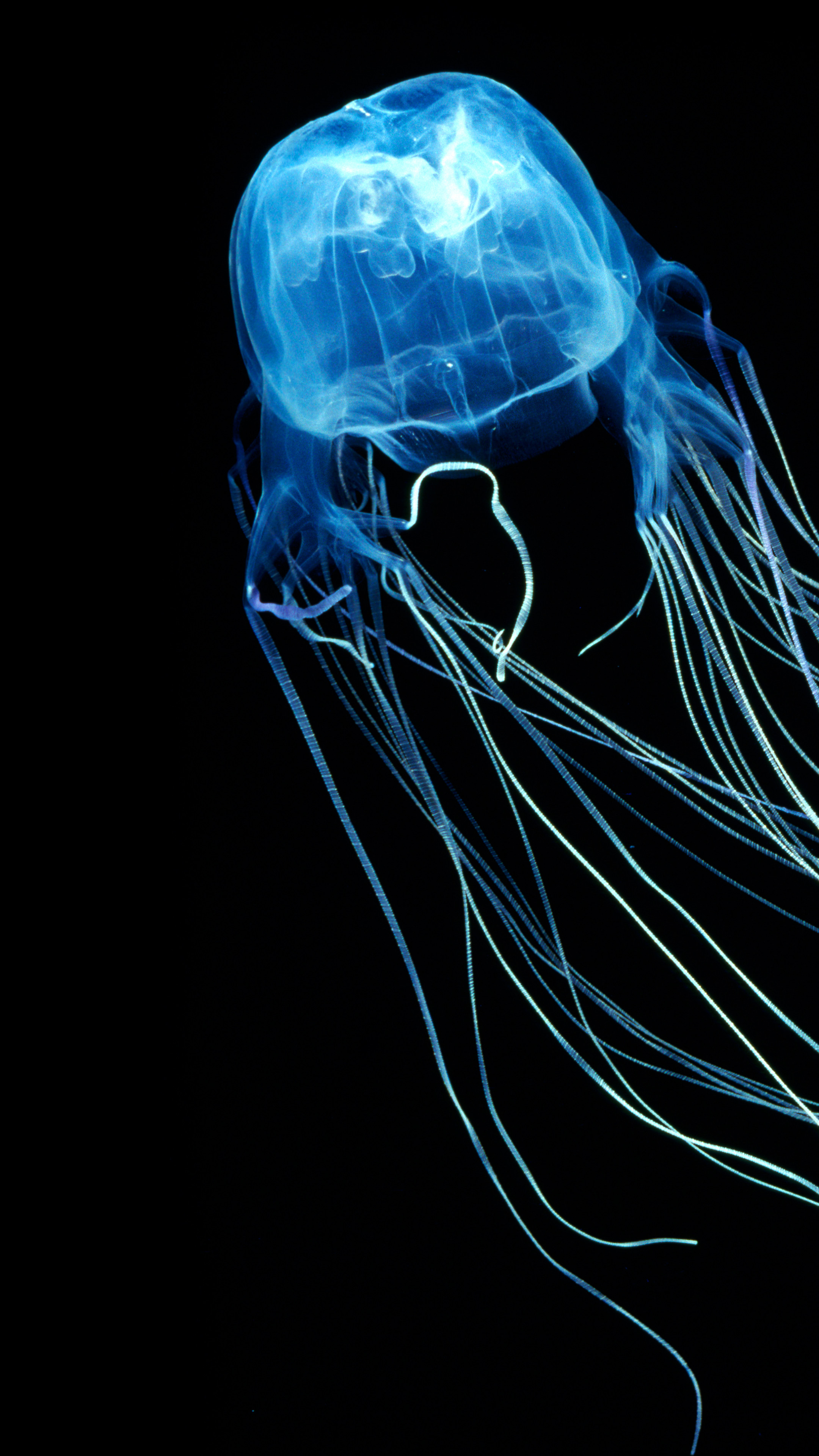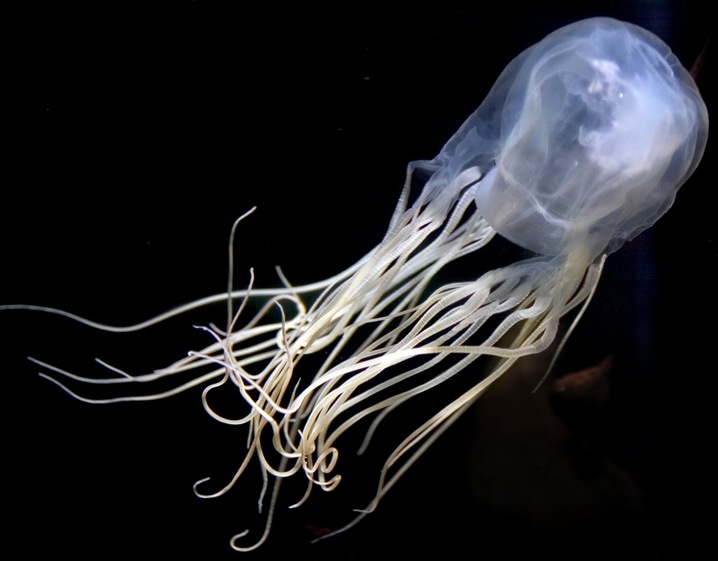

A single encounter can leave you with thousands of stings, and the powerful venom doesn't waste any time getting to work. With up to 15 tentacles growing from each corner of the jelly's bell, and each one reaching a possible 10 feet (3 meters), that's a lot of miniharpoons ready to deliver venom into a victim's body. (You can learn more about various species of jellyfish by reading How Jellyfish Work.)

Nematocysts are like little stinging darts that fire whenever the tentacle comes in contact with chemicals on the surface of its prey. (The box jelly gets its name from the boxy shape of its bell.) Each tentacle contains about 5,000 stinging nematocysts, housed in cells called cnidoblasts.

Also called sea wasp and marine stinger, the box jellyfish injects its venom by way of the many tentacles dangling from its bell, or body. This animal has enough venom to take out 60 adults. The venom of this pale blue, almost transparent, invertebrate is among the most deadly in the world, capable of killing a human in under five minutes. But, while most jellyfish stings do little more than annoy you, the sting of the box jellyfish can literally scar you for life - if it doesn't kill you first. You may have been stung by a jellyfish on a trip to the beach or a dip in the ocean. Actually, in the case of this particular animal, "bite" isn't quite the right word the more appropriate term is "sting." In fact, one of the world's most venomous animals is one you may never even see - even if it bites you on the nose. Some venomous animals are well known - black widows, rattlesnakes and fire ants all come to mind others tend to lead a more private life. In this article, we're not interested in those poisonous creatures that just wait around for something exciting to happen we're focused on the venom-producing go-getters. For example, snakes and spiders have fangs, wasps use stingers and scorpions strike with their tails. Venomous animals, on the other hand, have a device to actively deliver their lethal cocktail.
#A BOX JELLYFISH SKIN#
Poison dart frogs, for instance, secrete a toxic substance from their skin which is potentially fatal to predators that venture too close. In addition, most venomous animals can produce their own deadly concoction, whereas poisonous creatures usually acquire their toxicity through their diet.Ī poisonous animal can only transfer its toxins if another animal comes into physical contact with it or eats it (a sort of posthumous revenge). As a general rule, poison is used primarily for defensive purposes (by prey), and venom is used for offensive purposes (by predators). Whereas poison is transmitted passively through ingestion or absorption, venom is actively injected. The difference lies in the way the animal transfers its toxins. While the two terms are often used interchangeably, in the scientific realm, they have different meanings.

There are actually two kinds of toxic animals: poisonous and venomous creatures. We've all heard stories of violent bear maulings and gruesome shark attacks, but other animals strike in a much stealthier way with the help of potent toxins. Some of these encounters are relatively harmless, like a bug bite, but other animal meetings can be painful or even deadly. Most people have been on the receiving end of an animal's animosity at one time or another.


 0 kommentar(er)
0 kommentar(er)
